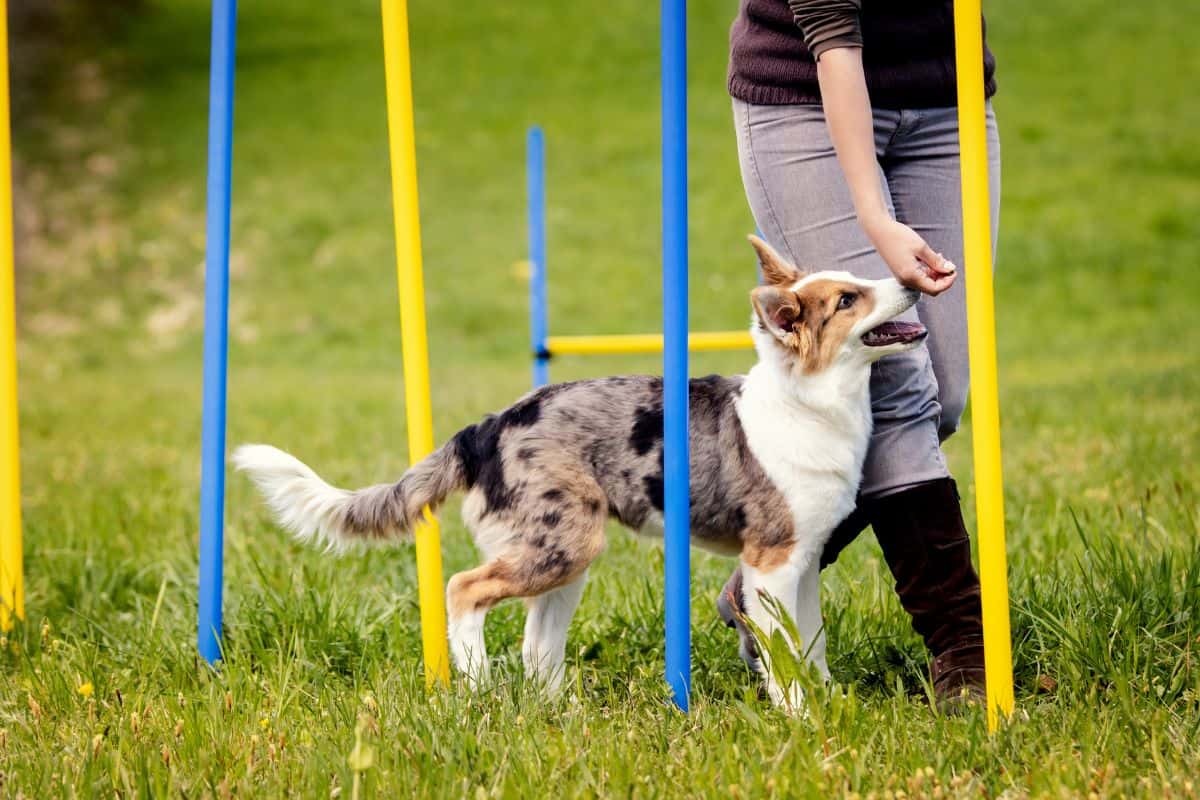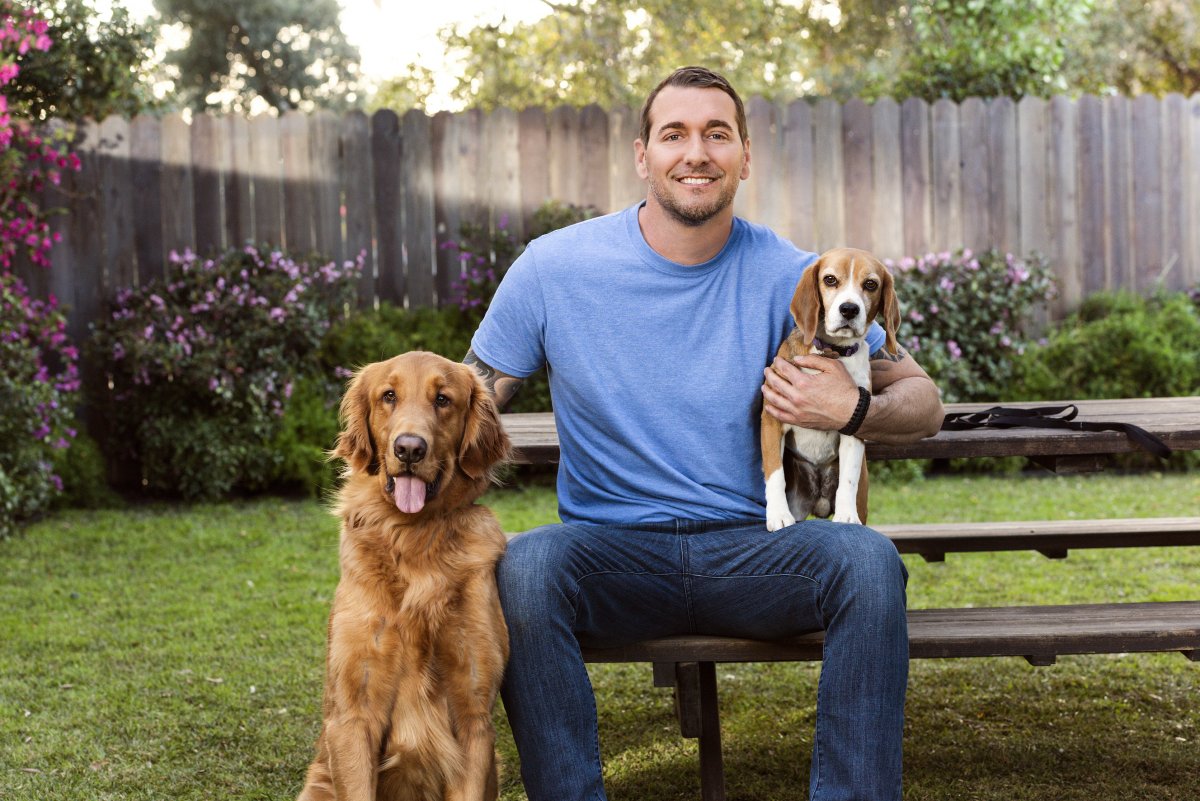Beginner's Overview to Effective Pet Dog Training at Home
Efficiently educating a pet dog at home needs a nuanced understanding of canine habits and effective communication techniques. Establishing clear training goals, using top quality benefits, and maintaining consistency throughout family participants are critical aspects. Integrating training into daily regimens can improve both interaction and retention.
Recognizing Pet Dog Behavior
Recognizing pet behavior is important for reliable training and promoting a harmonious partnership between human beings and their canine buddies - Puppy Training. Pets connect mostly with body language, vocalizations, and faces, making it vital for proprietors to translate these signals precisely. Identifying actions such as tail wagging, roaring, or cowering can offer understandings into a dog's psychological state and purposes
In addition, understanding the all-natural instincts of canines, such as their pack attitude, helps owners develop management functions within the house. This is essential for developing a structured environment where pet dogs really feel protected and are much more responsive to training. Pet dogs are additionally affected by their socialization experiences; very early exposure to numerous settings, people, and various other animals can considerably form their behavior later in life.
Typical behavioral concerns, such as hostility, anxiety, or too much barking, usually stem from misconceptions or unmet needs. Observing and resolving these problems immediately can protect against escalation and ensure a favorable training experience. By fostering a deep understanding of pet dog habits, owners can tailor their training methods to suit their canine buddies, eventually resulting in a mannerly and contented family pet.

Necessary Educating Tools
A fully equipped training room can considerably enhance the effectiveness of pet training in the house. Vital training devices guarantee that both the canine and the trainer can engage in effective sessions that cultivate understanding and bonding.

Purchasing a sturdy chain and a comfy, well-fitting collar or harness is crucial for safety and control. These devices assist develop limits and ensure the dog continues to be safe throughout training. Furthermore, an assigned training location, devoid of interruptions, help concentration for both the pet and the fitness instructor.
Educating aids such as training pads, cones, or dexterity tools can additionally boost the experience by introducing range and difficulties. Lastly, having a note pad or electronic application for tracking progression can be important, enabling you to keep in mind successes and locations for renovation. Using these vital tools will certainly develop a positive training environment and lay the structure for reliable discovering.
Creating a Training Routine
Establishing a regular training routine is necessary for efficient pet dog training at home. A well-structured regular not only assists in strengthening desired habits but also gives your dog with a complacency and predictability. To produce a reliable training regular, begin by identifying specific training goals, such as fundamental commands, chain strolling, or housebreaking.
Select a marked time each day for training sessions, preferably when your pet is receptive and sharp. Procedure should be brief, roughly 5 to 15 minutes, to maintain emphasis and protect against exhaustion. Consistency in timing and environment will boost your pet's learning experience.
Integrate training right into day-to-day tasks to reinforce skills. Practice commands during walks or mealtime, which incorporates finding out into all-natural regimens. In addition, stay versatile and readjust the regular as necessary, suiting your pet's energy degrees and state of mind.
Favorable Support Methods

When applying positive reinforcement, it is vital to pick benefits that are inspiring for your pet. High-value deals with, such as tiny items of chicken or cheese, can be especially efficient throughout training sessions. In addition, varying the rewards can maintain your pet's interest and enthusiasm.
Beginning with basic commands, like "rest" or "remain," and slowly progress to much more complex jobs. Uniformity is crucial; ensure that all relative make use of the exact same commands and reward systems to stay clear of confusion.
In addition, it is essential to continue to be patient and avoid Go Here disappointment. Pets, like humans, find out at their own pace. By cultivating an encouraging training setting via favorable support, you can boost your dog's discovering experience while strengthening the bond between you and your furry friend, laying the groundwork for successful training results.
Common Educating Difficulties
While educating a canine at home can be a satisfying experience, it often comes with a collection of typical challenges that can evaluate both perseverance and consistency. One common issue is diversion. Pet dogs may come to be conveniently averted by sounds, movements, or perhaps scents in their environment, making it challenging to keep their emphasis throughout training sessions.
Another challenge is incongruity in commands and reinforcement. It can puzzle the canine and impede progression if family members make use of different cues or benefits. Developing a unified technique is crucial for efficient communication.
In addition, pets can experience disappointment or stress and anxiety, specifically if they do not understand what is expected of them. This can cause unfavorable habits, such as barking or eating.
Lastly, the timing of reinforcement is critical. Delayed rewards can lessen the efficiency of positive reinforcement, as pets may fall short to link the habits with the incentive.
Getting rid of these difficulties calls for dedication, clear communication, and a structured training strategy - Puppy Training. Recognizing and addressing these usual barriers will certainly pave the means for a more successful and enjoyable training experience in your home
Conclusion
In final thought, effective canine training at home demands a detailed understanding of canine behavior and reliable communication approaches. By establishing clear training objectives and using high-quality deals with together with favorable support, the training procedure ends up being more gratifying for both the trainer and the pet. Flexibility, persistence, and uniformity are vital components that facilitate learning. Inevitably, incorporating training right into everyday routines improves the bond between canine and proprietor, making the experience both effective and enjoyable.
Establishing a constant training routine is important for effective pet dog training at home.Favorable reinforcement strategies are essential to effective dog training, promoting desired behaviors with benefits instead than penalty. By promoting a helpful training environment via favorable reinforcement, you can boost your canine's learning experience while enhancing the bond between you and your fuzzy friend, laying the foundation for effective training end results.
In conclusion, effective canine training at home necessitates a thorough understanding of canine behavior and efficient interaction methods. By developing clear see post training goals and using high-quality deals with alongside favorable reinforcement, the training procedure becomes more gratifying for both the dog and the instructor.
Comments on “Puppy Training: Start Your Pup Off Right with Professional Guidance”